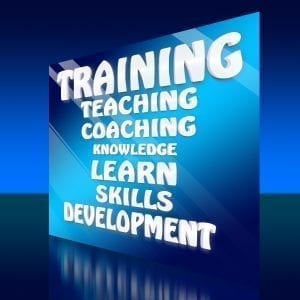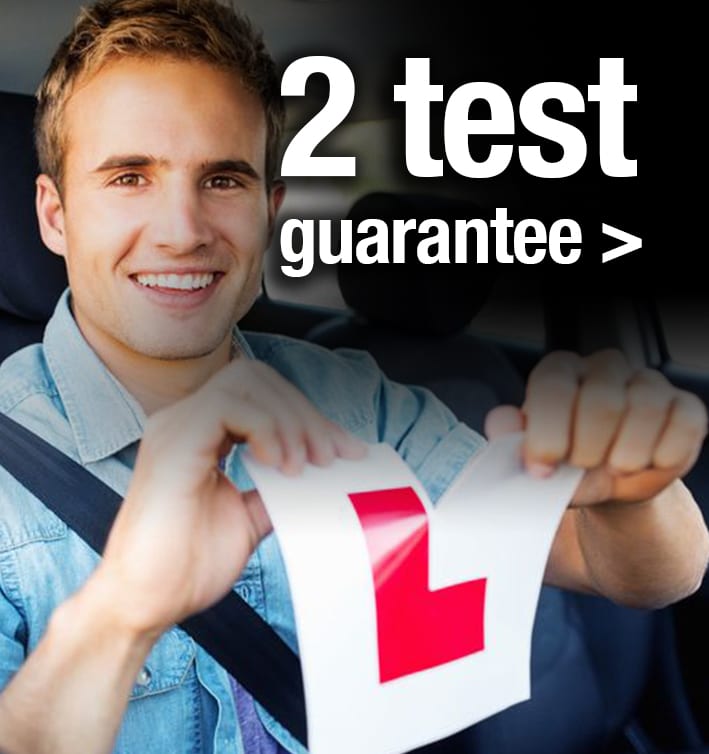This has to be one of the most common questions that learner drivers have in their mind practically ALL the time. This blog from BIG TOM admin will explore what is actually behind this question. The answer will be more revealing than you might have imagined. If you want to get in the right mindset for knowing how quickly you can learn to drive, read on…
This is probably the number 1 question on the mind of all learner drivers. Is it to do with money, and how much it will cost to learn to drive? Or perhaps time, and knowing how long you have to commit to this? But is it possible that you are surrounded by people who are telling you how “easy” it is to learn to drive, how few driving lessons they took, and with big sighs, rolling of eyes, raised eyebrows, you get the “how long have you been taking driving lessons now?” question. How does that make you feel?
Answer the Question!
Let me answer the question directly. How quickly can a person learn to drive? Being “able to drive” means different things to different people. Driving on a single carriageway road in 4th gear at 45mph with the foot slightly pressing on the gas pedal to maintain that speed is “driving”, of that there is no doubt. But contrast that kind of “driving” with negotiating a complex multi-laned roundabout, or merging on to a busy dual-carraigeway, or emerging from a side road on to a busy, fast moving main road. That is undoubtedly “driving” too. The problem with the question of “How quickly can I learn to drive” is what you actually mean by “driving”. For many people reading this blog, my response there is not going to be ‘answering the question directly’ to their satisfaction. Some people want a straight answer to a straight question, and for you readers, let me offer the answer of approximately 5-8 hours. For an absolute beginner, within 5-8 hours of driving on the BIG TOM Intensive Driving Course, most pupils will be able to navigate safely around residential areas, turning and emerging in to junctions on 30 mph roads. The amount of assistance required by the driving instructor will vary, some will need more verbal instructions to prompt driving actions than others, but an average pupil will begin to identify with a sense of “being able to drive” after this amount of time. Do be careful with averages though, in my experience of 1:1 learning environments, having pre-conceived ideas of what “average” outcomes should be when learning to drive can be very demoralising, frustrating and also quite limiting – it means the pupil is aiming for an “average” outcome.
Let me expand a little on the phases that absolute beginner Learners go through when learning to drive. You might be surprised to read what actually is going on when a pupil goes through this process.
Car Control and What That Means To You
Initially, a pupil will want to gain some confidence in knowing how a car works. What all the buttons, pedals, mirrors, safety features are there for, how they are used and why they are important. Once there has been a raising of the awareness of what does what, there is a phase where the pupil begins to understand why those controls benefit them when driving. These are far reaching benefits that include how adjusting the drivers seat position affects controls of the pedals and vision out the car, how the steering wheel position adjustment aids control of the position of the car in the road, how mirror adjustments affect safety by allowing a driver to see what is around… and on it goes. This phase is crucial because it is connecting an important link between the sheer ecstasy of beginning to actually drive, with the responsibility of appreciating the need to drive safely by making sure the car is set up to enable the pupil to drive well. For some pupils, this realisation of recognising that the guidance being offered is personal to them, unique to their learning experience comes at different levels of time. The previous experiences pupils have of learning environments, particularly 1:1, will provide a great advantage to some pupils as they will instinctively recognise the advantage of maximising their learning experience by developing an open, honest and respectful relationship between pupil and driving instructor. Pupils in this phase tend to be rather restricted in their awareness of activity outside the car, their brains are working hard trying to make sense of all these new in-car stimuli.
Driving with Consistency – to a Routine
Even at this stage of driving round housing estates on 30 mph roads, some pupils will be more willing than others to recognise and attempt to pre-empt a ‘system’ to the driving that ensures driving actions are methodical, timely and controlled. How much assistance a pupil needs to encourage them to take on the responsibility of proactively driving to these routines is very personal, and cannot be pre-judged by a driving instructor. At BIG TOM Driving School we go to great efforts to raise the awareness of our pupils for the need to embrace this fact, and some pupils will welcome this concept more than others…. it is quite individual. Without doubt one of the biggest learning points at this phase is an appreciation of how crucial TIME is when driving. There are so many driving actions to do, involving co-ordination of the hands and feet and effective observations, that appreciating the benefit of buying time is key. Careful consideration is given to the location at this phase, as the wrong locations can knock confidence and be very demoralising. Emphasis is placed on accuracy of the position of the car on the road, and developing slow, methodical and accurate driving actions. There are no bonus points for rushed driving actions that lead to unhelpful consequences.
Modes of Driving
There are different “modes” of driving, and briefly they can be categorised into: town driving, rural road driving, ‘fast road’ driving (dual-carraigeways and motorways), and reversing. What happens next is that pupils are encouraged to experience these different modes of driving with great care being taken to ensure the learning environment is safe and that layers of learning and confidence are developed by the pupil that are based around positive outcomes. This is a key and enlightening phase to go through, as the pupil begins to appreciate what effect driving at higher speeds or in the other direction has on how they think and feel, and likewise how it affects their ability to control the car. How much a pupil wants to participate in managing this learning experience again is quite personal. Some pupils will happily embrace the responsibility of adapting the learning process to their particular needs, whilst others will not welcome that approach at all. The goal is for the pupil to get confident in driving in these different modes, on unfamiliar roads, in all driving conditions, and with time, that will be achieved with very little input, if any at all from the driving instructor.
Are there any other considerations as to how quickly I can learn to drive?
There are a few key ingredients in the ‘effective learning’ pot, this is not to say that the following MUST be present for someone to learn to drive, just that these are recognised to be very favourable in assisting successful outcomes.
Benefits of Feedback
Whilst this training is occurring, there is a subtle combination of feedback occurring between driving instructor and pupil which can have quite profound effects on the learning experience. Some pupils ability to be conscious of their thoughts and feelings is more advanced than others, equally so for levels of self-awareness (having an appreciation of how well aspects of learning to drive are going). Any previous experience of learning environments at school/college/work can have an influence on this point. How much experience a pupil has of “looking inwardly” at their ability and confidence varies greatly. The quality, quantity and timing of feedback to a pupil can be crucial – driving instructors who pay no attention to this point, show little regard for the satisfaction levels of their pupils, not to mention the effect on learning curves.
Outside Influences
There are a great deal of outside influences that have a direct impact on the learning process which a driving instructor may have little influence over. Examples of this are role-models in the life of the pupil and their attitudes to driving, how peers can affect the mind of the pupil, to what driving standard the pupil is attempting to be competent, the frequency/duration of sessions and the ability of the pupil to forward plan driving training sessions taking into account budget and time constraints, and even any previous traumatic driving related experiences. The physical number of hours spent sitting in a driving school car can have little relevance on learning if any of the above influencers are affecting the mindset of the pupil.
Pupil v Trainer Relationship
I say “Trainer” here because there are different modes of teaching, and the role the trainer takes in the relationship eg coach, mentor, instructor. In the UK there are no restrictions about who can train a pupil, or how much time it takes, the methodology, or even the syllabus. The DVSA have produced Driving Standards on the subject of learning to drive, but when a pupil applies to take the driving test, it is not accepted conditionally on how the pupil has been taught to drive. Parents can teach their young ones how to drive, with no reference to any DVSA controlled resources at all. At BIG TOM Driving School, our experience shows us that using highly qualified, professional driving instructors who are “pupil-led” in their teaching methodology rather than “instructor-led” is extremely important. Having a two-way honest and open relationship within a 1:1 learning environment will assist in maximising the rate of learning. Wasted time and money can be consumed within a learning environment when the relationship between pupil and trainer is not effective, and rather than a stimulating, enjoyable, limitless learning environment, the learning is stifled, restrictive, unpleasant and frustrating. One reason for this can be related to “special needs” that a pupil may or may not be aware of.
Quite some answer to what is on the face of it, a very simple question! When you start taking into account that some pupils have more ‘natural ability’ to multi-task their hands and feet, or that some are more able to anticipate what other road users may do, or that some can visualise and forward plan easier than others, you begin to realise that actually, the question is a little silly to try to answer in any general terms. The fact of the matter is that all learner drivers are different, they enter into the process coming from different backgrounds of learning experiences, with differing learning preferences, having been exposed to driving practises of family members for several years, and with expectations that differ wildly.
Tom Ingram is the owner of BIG TOM Driving School who specialises in providing our 5 star all-inclusive intensive course in Lincoln, Peterborough, Boston, Spalding, Stamford, Bourne and Grantham (01928 508 833)





